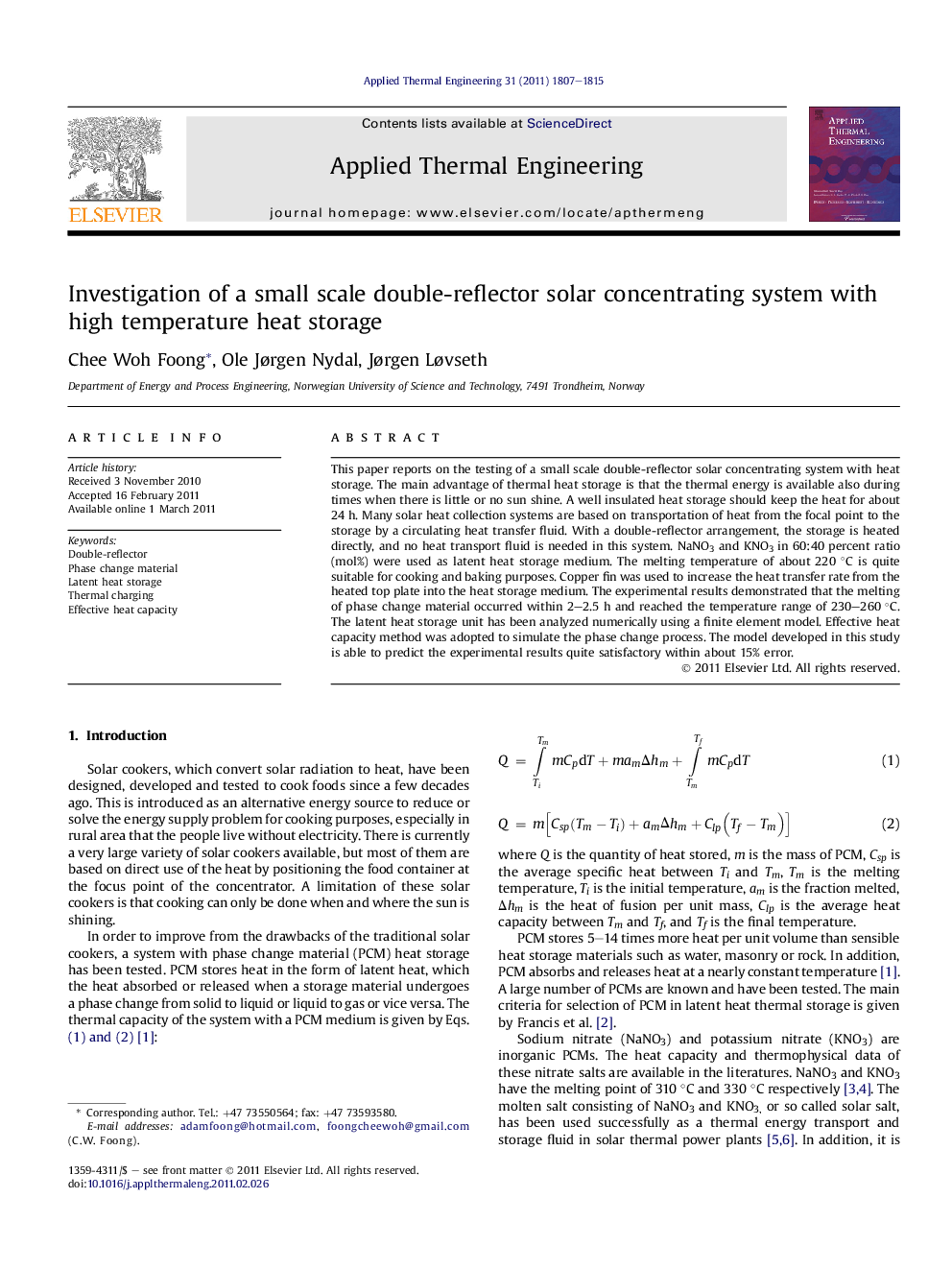| کد مقاله | کد نشریه | سال انتشار | مقاله انگلیسی | نسخه تمام متن |
|---|---|---|---|---|
| 648019 | 884608 | 2011 | 9 صفحه PDF | دانلود رایگان |

This paper reports on the testing of a small scale double-reflector solar concentrating system with heat storage. The main advantage of thermal heat storage is that the thermal energy is available also during times when there is little or no sun shine. A well insulated heat storage should keep the heat for about 24 h. Many solar heat collection systems are based on transportation of heat from the focal point to the storage by a circulating heat transfer fluid. With a double-reflector arrangement, the storage is heated directly, and no heat transport fluid is needed in this system. NaNO3 and KNO3 in 60:40 percent ratio (mol%) were used as latent heat storage medium. The melting temperature of about 220 °C is quite suitable for cooking and baking purposes. Copper fin was used to increase the heat transfer rate from the heated top plate into the heat storage medium. The experimental results demonstrated that the melting of phase change material occurred within 2–2.5 h and reached the temperature range of 230–260 °C. The latent heat storage unit has been analyzed numerically using a finite element model. Effective heat capacity method was adopted to simulate the phase change process. The model developed in this study is able to predict the experimental results quite satisfactory within about 15% error.
► Development of small scale double-reflector concentrating solar thermal system.
► Storage is heated directly; no heat transport fluid is needed with this system.
► NaNO3–KNO3 binary mixture is used as latent heat storage medium.
► Heat storage reached the temperature range of 230–260 °C.
► Model developed is able to predict the experimental results within 15% error.
Journal: Applied Thermal Engineering - Volume 31, Issue 10, July 2011, Pages 1807–1815